Features of Quaker parrots

In pet stores, you can sometimes find unusual and amazing birds - Quaker wedge-tailed parrots. It is the only species belonging to the genus Myiopsitta. Natural habitat - steppes, palm groves and forest thickets of southern South America. Like domestic pigeons and sparrows, birds feel great on city streets next to people.

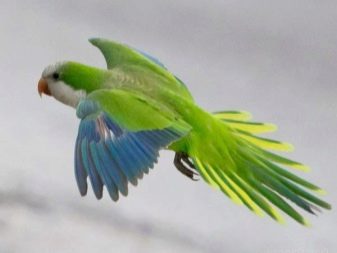
Description
Quakers in different countries are called differently: monk parrot, kalita. The birds got their so unusual name thanks to their discreet plumage, reminiscent of the robes of Quaker monks. The upper part of the bird, including the back of the head, back and wings, is colored dark green, there is a gray “cap” on the head, this outfit is very reminiscent of a monochromatic cloak with a gray hood. The chest is white-gray, bright green pants are "put on" on the legs - this is the natural color of the parrot.
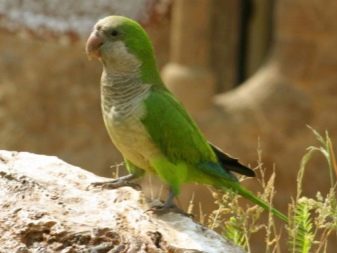
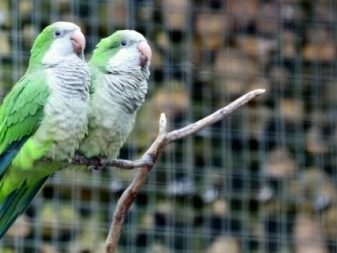
Birds of this species are usually not very large - males reach 30 centimeters in length, wingspan reaches half a meter. Females are 20-25 percent smaller than males. Monk parrots reproduce rapidly, laying four to eight eggs at a time. It is not possible to visually distinguish the sex of the birds - there are no sexual characteristics.
In their homeland, Kalita is considered a pest. With their huge numbers, birds cause irreparable damage to agricultural land and orchards.

To save the harvest, birds are caught and sold to other countries as decorative pets.
Features of the view
These are noisy birds, prone to making harsh frightening sounds for almost any reason, whether it be anxiety or interest in something.It is this tendency that is a characteristic feature that allows you to accurately distinguish a monk from other varieties of parrots. These are very domestic birds that will certainly return to their habitat, whether it is the owner's house in captivity or a favorite place in the open air.
Quakers are the only parrot species that prefers to build nests for laying eggs.... Like many birds, their nests are built from natural material - tree branches. The location of dwellings so unusual for parrots can be not only trees, but also roofs of houses, overpasses, supports of bridges and power lines.
Also, monk parrots can take a fancy to hollows and rocks, placing their family nests on them. Chicks appear in them no more than two times during the year. The natural color of this species is green. But artificially, as well as as a result of mutations, it was possible to breed individuals of various colors:
- blue - the upper plumage, including wings and legs, has different color shades of blue, natural green is absent;
- blue - natural green color has been replaced by rich blue; the appearance of the birds is unusual;
- orange - unique specimens of rich color, which are very difficult to hide in the green leaves.
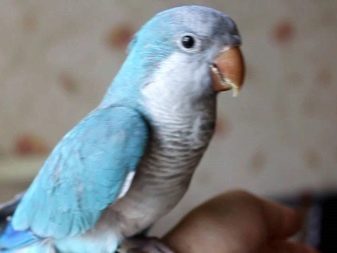
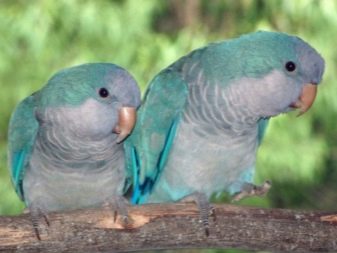
Character and habits
The monks are very friendly, they quickly become attached to the owner and are ready to accompany him everywhere. They are easy to teach to talk: like most parrots, they have excellent abilities in this area. But Kalita does not pronounce the words clearly, while several dozen can remember them... Feathered conversation is more like scraps of individual words than coherent speech.
They are much better at imitating various sounds made by humans and other animals, as well as objects and instruments. In addition, the bird is able to hum the melodies it likes. Birds prefer company, do not tolerate loneliness, becoming irritable and noisy. But as a company they prefer a person or their relatives.
They are very wary of strangers and parrots of other species, not wanting to coexist with them.
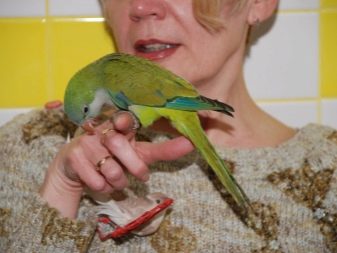
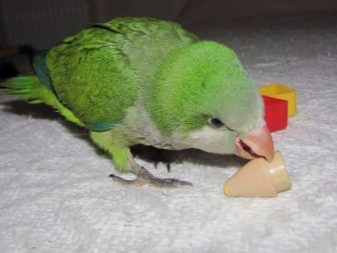
Quakers also love new toys, they can carry various trinkets they like to their hiding places, and then play with them on the sly. Swimming becomes one of the entertainment: birds can soak not only themselves, but also small objects that are within reach.
Home improvement
In nature, parrots live in nests, easily assimilating in various climatic environments. In captivity, they need to equip a comfortable home, as well as create favorable conditions for living, which is especially important for the health and longevity of the pet.
Monks are very active and mobile creatures for whom it is very important to fly for a long time. When choosing a cell, this nuance should be taken into account: the space inside it should be large, providing an opportunity for flying.
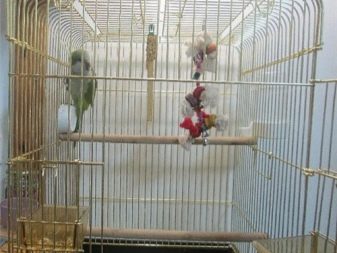
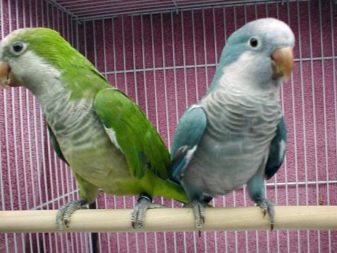
In addition, parrots should be allowed to regularly exercise around the rooms of your house - reclusiveness is not good for them.
Feathers should be protected from any stressful situations., which can cause serious illness up to the sudden death of Kalita. Birds are especially afraid of sharp sounds, unexpectedly flashing bright light, sudden random movements of the cage.
As for the cell: choose a metal one, which does not contain substances harmful to living beings. Undoubtedly, wood is an environmentally friendly and safe material, but under the sharp beak of a Quaker parrot, the wooden cage will turn into splinters in a short period of time.
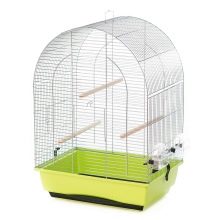

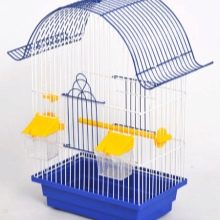
An artificially created dwelling must necessarily have corners. - the presence of a secluded place is very important for a feathered pet. Perches are also a mandatory attribute of the arrangement of the cage, after all, birds spend a significant part of their lives on them.A lock should be provided on the door: monks are so inventive that, without the knowledge of the owner, they are able to open ordinary locks.
Parrots need sunlight; in winter, its lack can be compensated for by the rays of an ultraviolet lamp. Temperature and humidity also play a huge role in the life of these parrots.
Sharp fluctuations in parameters adversely affect the health of birds.
Reproduction
In captivity, parrots reproduce reluctantly. However, by creating a special environment for them and placing a nest in the cage, it is quite possible to count on healthy offspring. Just like in the wild, the female is able to lay up to eight testicles - one per day. She will incubate them in turn with the male for about 26 days.
Chicks should be taught to independent life after they reach three weeks of age... From this age, babies should live separately from their parents. The sooner you start taming them, the better results you can achieve.
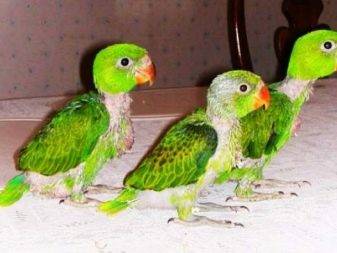

What to feed?
In their natural habitat, Quakers feed on grains, berries, and the fruits of fruit trees. In captivity, they need a more varied diet rich in vitamins and minerals. The fact is that parrots of this species have an increased tendency to liver diseases, and therefore the owner will have to patiently accustom them to the variety of the table. They need to be fed with dry mixtures in combination with boiled cereals, vegetables, fruits, herbs (grass and leaves).
In the case of offspring, chicken eggs and finely chopped beef heart must be added to the diet (but not in large quantities).
Mineral sand and limestone must be present.
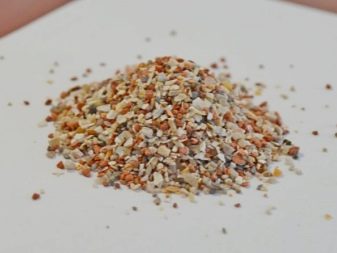
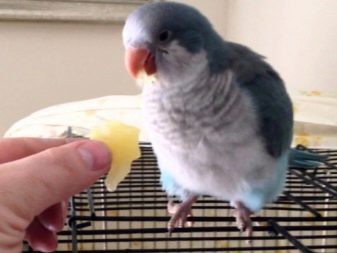
As a treat, you can give unleavened cracker and freshly squeezed juice. Do not forget about water - it is the basis of life for all living things. You can add honey or citrus juice to bird water.
The life expectancy of monk parrots is on average three decades. The more the conditions of their keeping are close to natural natural conditions, the more comfortable the feathered pet will feel. Do not forget that birds are prone to diseases such as gout and psittacosis, which can only be cured with a timely visit to the veterinarian.
In addition, the behavior of birds should be constantly monitored - they have a tendency to pluck themselves. Thus, subject to the basic rules of care and feeding, Quakers are able to delight the owner for many years with their presence in an artificially created habitat.

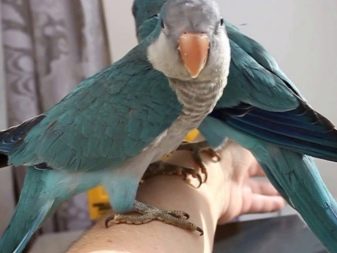
You will learn how to choose and tame a Quaker in the following video.








